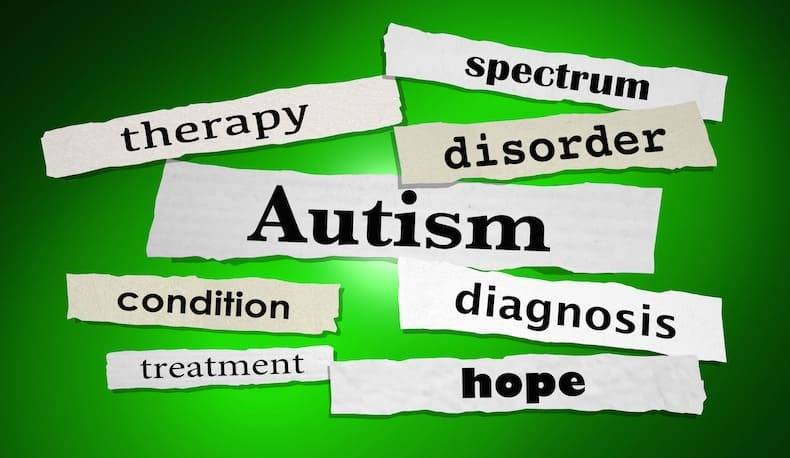
Recently, I wrote an article about how people with Autism Spectrum Disorder (ASD) communicate. In this follow-up to that article, I want to look at two additional features of communication, literalness and the use of metaphorical language, both of which are common to ASD. In fact, they are so common that a crucial factor in diagnosing someone with ASD is the extent to which literal and metaphorical language is present in the person’s day-to-day communication.
Before going into more detail, I want to re-emphasize two important facts about Autism Spectrum Disorder in general. First, despite the seemingly clear-cut list of behaviors one finds on the Internet and in other sources, it is a complex syndrome that can vary widely from person to person. Although I said that literalness and the use of metaphorical language are core features of ASD, the fact is that these two features may be a minor part of someone’s speech even though that person has Autism.
It bears reminding that no two people with Autism Spectrum Disorder are identical. General descriptions of ASD are exactly that, broad characterizations that may or may not match how any one individual communicates.
Second, these two types of communication, like all other characteristics of Autism Spectrum Disorder arise from one fundamental point of origin, an innate inability to notice and comprehend the emotional states of others. It is the built-in interest in others that from the earliest moments of life shape how most people think, act and communicate. Lacking such an ability to recognize, even be interested in, how other people think and feel leads to the characteristic behaviors and thought processes that are unique to Autism.
Literal Language
When asked where they live, most people provide a location or address, such as “in the upper West Side” or “at 252 Green Street.” Someone with Autism Spectrum Disorder, on the other hand, might say, “in a house” or “in an apartment.” Why?
People with Autism Spectrum Disorder have problems understanding socially determined shifts in word meaning and/or the context in which meaning is situated. Their views of what something means tends to be narrow and limited and lack appreciation for the context in which a word or idea is expressed. Hence, where someone lives is limited to the most basic, literal, meaning of the phrase, such as a house, apartment, dorm room, etc. Viewing where someone lives as an area without clear boundaries, like a neighborhood, is an abstraction that is difficult for someone with Autism.
The world of people and things, for those with Autism Spectrum Disorder, is generally understood according to the ways in which they are originally defined. So, to say, “I’ve eaten so much that I’m about to explode,” would be understood in its literal sense, as what happens when something is about to burst or shatter violently. “My backpack weighs a ton” would be understood similarly, in this case as weighing close to 2000 pounds.
Literalness reflects an inflexible cognitive learning style in which meanings are based on concrete, factual, and/or specific experiences, as opposed to intangible, abstract meanings.
People with Autism Spectrum Disorder lack flexibility in understanding an idea according to the meaning it first had, regardless of how the idea might change depending upon the situation or its social usage. A good example of this is the following: a seven-year-old boy practicing with his Little League baseball team heard his coach yell, “time out.” To which he replied, “Why? I didn’t do anything wrong!”
Metaphorical Language
People with Autism Spectrum Disorder frequently use words and language that have a private meaning different from their common definitions. “Let’s go red riding” would make little sense to most of us. However, to someone using metaphorical language, associating a car painted red and traveling could make complete sense.
As with literalness, metaphorical language reflects an inflexible, situation-specific, cognitive style. It occurs when someone has difficulty taking the perspective of others and appreciating the role of shared social understanding in establishing meanings of words and sentences. To say “wizards,” when feeling worried or anxious, for example, might make sense to someone who made a connection between wizards and scary, alarming circumstances at one point in their life, but to the rest of us it would be meaningless.
Metaphorical language tends to be used to express complex thoughts and feelings. It reflects the difficulty people have in communicating what is going on in their minds as opposed to the factual, “objective” information they see or hear. And because metaphorical language is connected to inner experiences, it occurs especially in stressful, anxious and confusing moments.
It goes without saying that metaphorical language, even more so than literalness, requires the listener to figure out what the reference is. Without knowing how “wizards” and anxiety are related, in the above example, it would be virtually impossible to know what the speaker is referring to. Understanding someone with Autism Spectrum Disorder often requires “reading between the lines” to know what the real meaning is behind communication.




